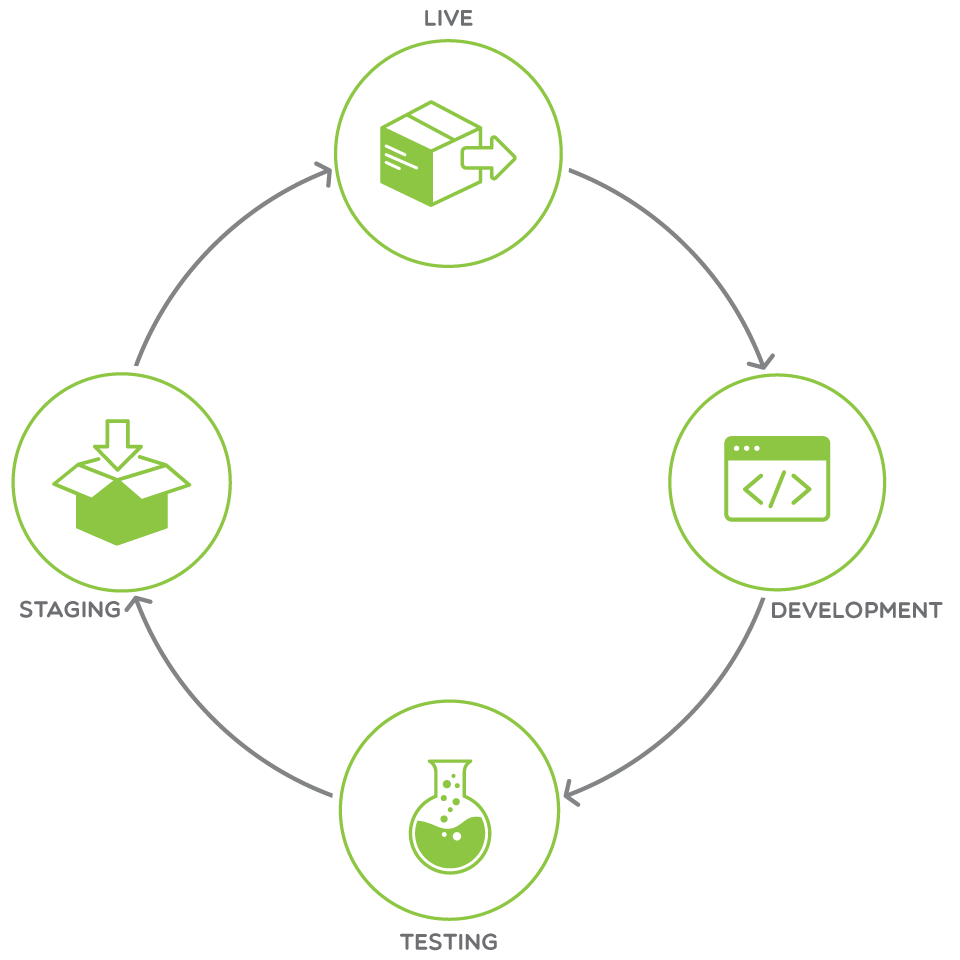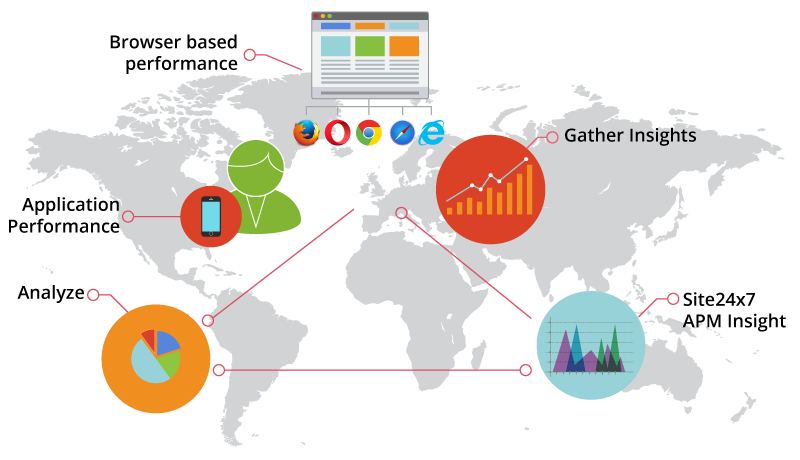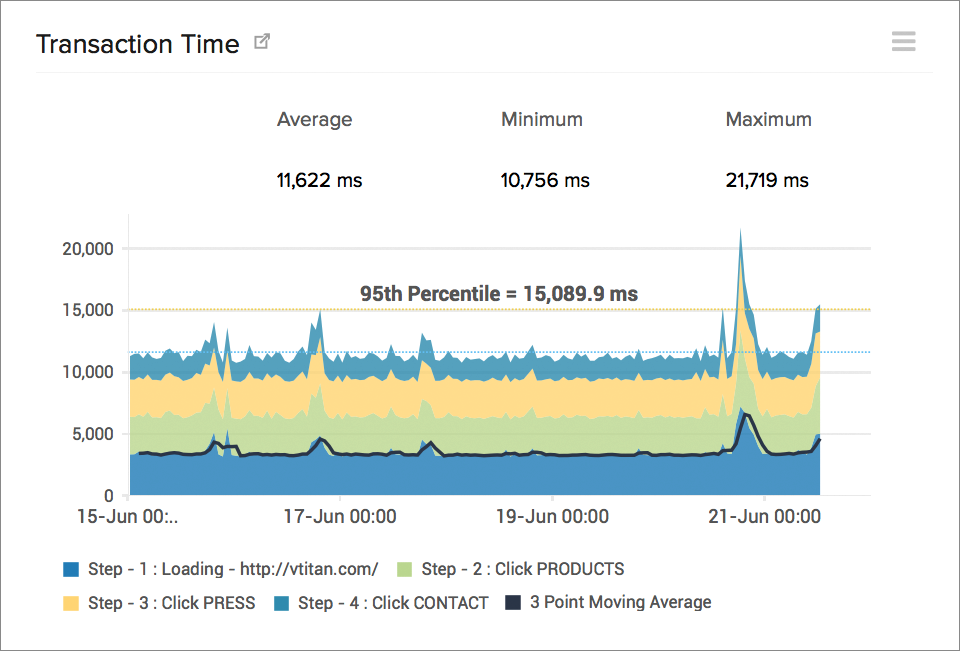The best way for any business to measure the effectiveness of their web application is by measuring the performance that their end users experience. With users becoming more and more demanding, it has become critical for businesses today to have ongoing application monitoring solutions. To this end, Site24x7 provides you with our Real User Monitoring and Synthetic Monitoring solutions which will provide you with valuable insights into how your web applications are performing.
What are they about?
Synthetic Monitoring
Synthetic also known as active performance measurement is a monitoring solution where website development team will create an artificial scenario in which they will try to mimic the way that actual website traffic will enter the website in a controlled environment.
Real User Monitoring (RUM)
RUM also known as passive measurement is a monitoring solution in which unlike synthetic the actual performance of website as and when users access the website content is measured and monitored.

How they work
Synthetic Monitoring
- Website team approaches the page provider and requests to conduct test on a series of URLs.
- The provider then accepts the request and forwards it to the different browser agents or rendering teams.
- The agent then renders the response and website team measures the response time.
Real User Monitoring
- A visitor visits company website and views the page content.
- RUM javascript in the page collects the timing data from the browser.
- This data is then sent to the website monitoring team.

Type of data collected
Synthetic Monitoring
Information such as DNS lookup time, time to load first byte etc. can be obtained and also a lot of data on the content itself such as what kind of script is being used on most of the websites, whether they are image files etc. to the extent that we can create the exact page requests that come in and even recreate them for future monitoring.
Real User Monitoring
Collects actual data about page load time that the user experiences, and it also covers all locations and agents unlike in synthetic where the monitoring team may try to make it as comprehensive as possible but can miss out on a few. It can collect just about anything that we can get from javascript.

Applicable scenarios
Synthetic Monitoring
Will provide a consistent noise free data (unlike RUM) which will allow you to get more meaningful alerts and make informed decisions on how to improve the performance of your web applications. Synthetic is normally used by companies before the application goes into production, to make sure that it is working properly and can handle real life situations.
Real User Monitoring
Much more extensive and does not need the DevOps teams to design use cases as it is running in real time. It will also cover for all errors that occur in all geographies or due to different browsers which Synthetic may miss. Simply put, RUM will catch everything which makes it very important for large organizations who run complex applications which keep on changing.

So which one to choose?
Truth is, that there is no clear winner among the two. In fact they are actually complementary in nature.
How the system will work.
Using Site24x7, users can now plot their real user traffic against their synthetics and understand the difference in performance across geographies, browsers and synthetic data.
This will allow your team to ensure that your synthetic scripts are based on the real world data ensuring that they are one step ahead of any performance issue you may face.